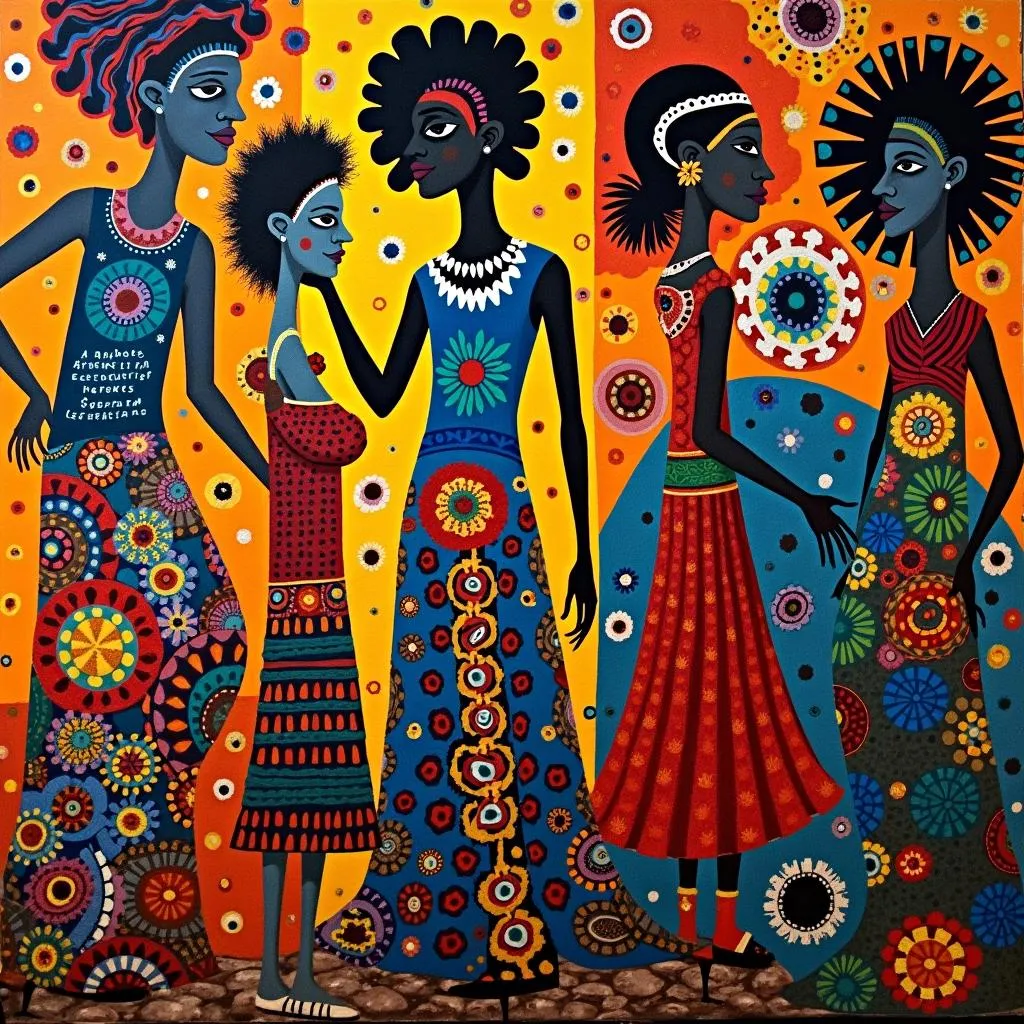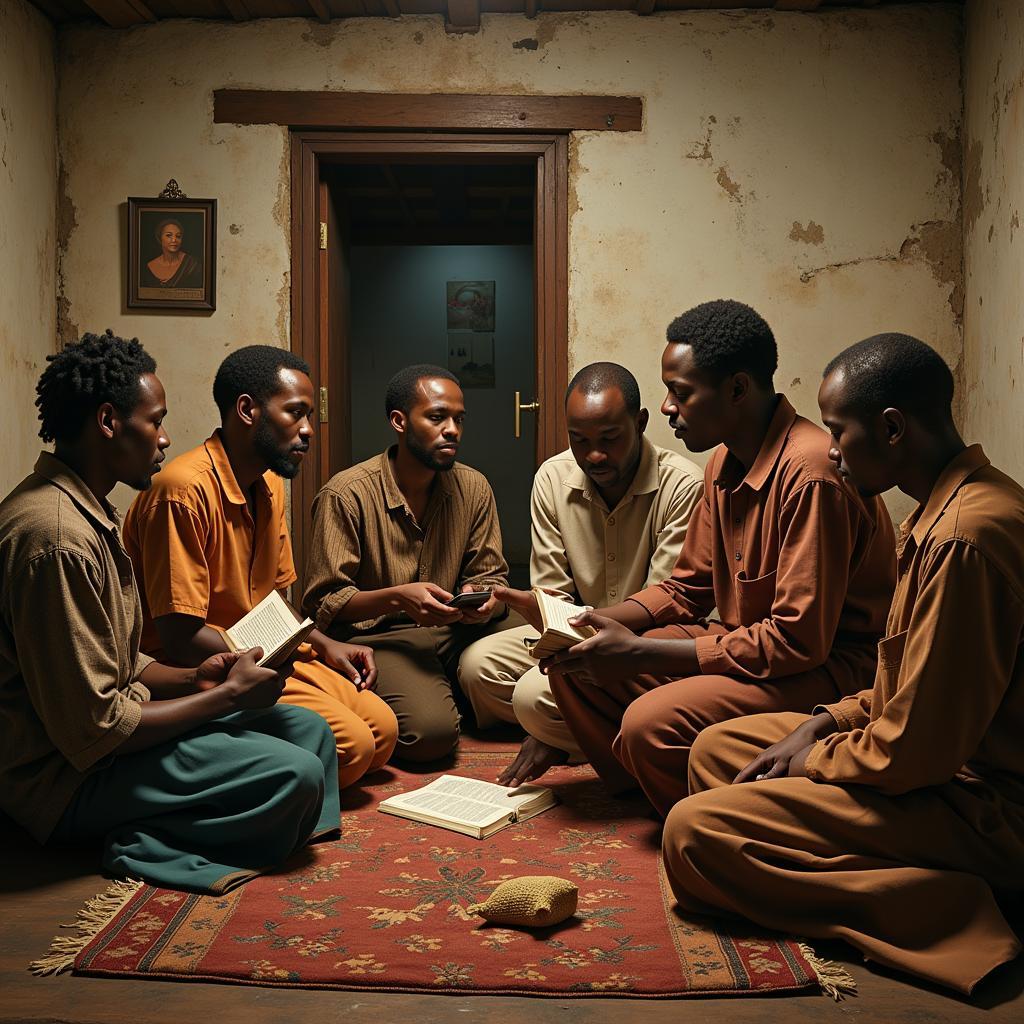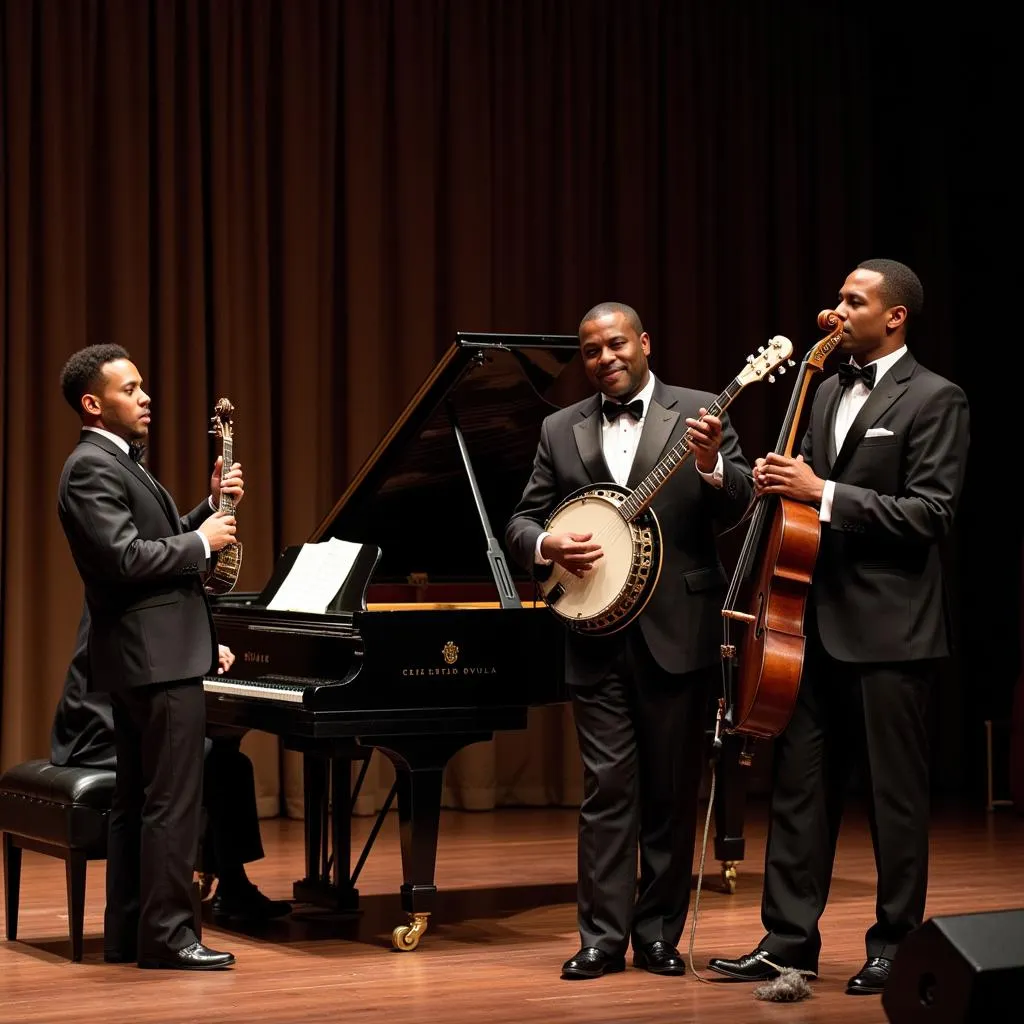African Inspired Art: A Vibrant Expression of Culture and Creativity
African art is a captivating and diverse tapestry of creativity, reflecting the rich history, beliefs, and traditions of the continent. From intricate masks to colorful sculptures, vibrant textiles to rhythmic music, African-inspired art has captivated audiences worldwide for centuries. This article explores the unique characteristics, evolution, and influence of African-inspired art, offering a glimpse into the creative spirit of Africa and its enduring impact on global art forms.
The Essence of African Art
African art is not merely aesthetic; it is a powerful medium for storytelling, religious expression, and social commentary. It serves as a visual language that communicates complex ideas, beliefs, and cultural values.
Central Themes in African Art:
- Spirituality: The spiritual realm is a central theme in many African art forms. Masks, sculptures, and other objects are often imbued with spiritual significance, representing ancestral spirits, deities, or supernatural forces.
- Ritual and Ceremony: Art plays a crucial role in African rituals and ceremonies, serving as a bridge between the physical and spiritual worlds. Masks are used in masquerades, sculptures are invoked in ancestor veneration, and textiles adorn dancers and performers.
- Social Order and Hierarchy: Art often reflects the social structures and hierarchies of African communities. For example, royal regalia and decorative objects often indicate status and power.
- Daily Life and Nature: Art also depicts the daily lives of African people, showcasing their skills, tools, and relationship with nature.
Influences and Evolution of African Art
African art has evolved over centuries, influenced by a multitude of factors, including:
- Materials and Techniques: Traditional African art often utilizes readily available materials such as wood, clay, bronze, and textiles. Carving, weaving, metalworking, and painting are among the most prevalent techniques.
- Regional Variations: Different regions of Africa have distinct artistic styles and traditions. For instance, the Dogon people of Mali are renowned for their wooden masks, while the Yoruba people of Nigeria are known for their terracotta and bronze sculptures.
- Colonial Influence: The colonial era brought about significant changes in African art, as European influences were introduced. This led to the development of new styles, such as the “modern” African art movement.
- Contemporary Influences: Today, African art continues to evolve, incorporating contemporary themes, materials, and techniques. Many artists use their work to address social and political issues, while others experiment with innovative forms of expression.
African Art Beyond the Continent
The influence of African art extends far beyond the continent.
Global Impact:
- Modernism and Cubism: Artists such as Pablo Picasso and Henri Matisse were deeply inspired by African masks and sculpture, which influenced the development of modern art movements like Cubism.
- Abstract Expressionism: The bold colours and abstract forms found in African art have also inspired abstract expressionist painters such as Willem de Kooning and Jackson Pollock.
- Contemporary Art: African-inspired themes, techniques, and motifs continue to be explored by contemporary artists worldwide, reflecting the enduring relevance of African art in the 21st century.
African Art in the 21st Century
Today, African art is experiencing a resurgence of interest.
Contemporary Artistic Expressions:
- New Media and Technology: Many contemporary African artists are incorporating digital media, installations, and performance art into their practices.
- Social and Political Commentary: African artists are using their work to address critical social and political issues, such as poverty, conflict, and the impact of globalization.
- Global Recognition: The work of African artists is increasingly being exhibited in prestigious galleries and museums around the world, receiving critical acclaim and international recognition.
Conclusion
African-inspired art stands as a testament to the continent’s rich cultural heritage, enduring creativity, and global influence. From traditional forms to contemporary expressions, African art continues to captivate audiences worldwide with its beauty, symbolism, and power. As we embrace the diverse voices and artistic expressions emerging from Africa, we gain a deeper understanding of the continent’s unique contributions to the world’s artistic landscape.
FAQs
Q: What are some popular types of African art?
A: Some popular types of African art include masks, sculptures, textiles, beadwork, and pottery.
Q: What are the key characteristics of African art?
A: African art often features bold colors, geometric patterns, and symbolic representations of spiritual beliefs, social structures, and daily life.
Q: How can I learn more about African art?
A: You can learn more about African art by visiting museums, attending art exhibitions, reading books and articles, and exploring online resources dedicated to African art.
Q: How has African art influenced Western art?
A: African art has played a significant role in shaping Western art movements such as Cubism, Abstract Expressionism, and contemporary art.
Q: What are some notable contemporary African artists?
A: Notable contemporary African artists include El Anatsui, Yinka Shonibare, William Kentridge, and Romuald Hazoumè.
Q: What are some resources for learning about African art?
A: Some valuable resources include the National Museum of African Art in Washington, D.C., the Musée du Quai Branly – Jacques Chirac in Paris, and the website of the Smithsonian’s National Museum of African Art.
Q: How can I buy African art?
A: You can purchase African art from galleries, online platforms, and at art fairs and markets.
Q: What is the importance of supporting African artists?
A: Supporting African artists helps to preserve and promote their cultural heritage, provide them with economic opportunities, and foster the development of African art on a global scale.
Q: What are some tips for collecting African art?
A: When collecting African art, it’s important to research the artist, the materials used, and the cultural significance of the artwork. It’s also advisable to purchase from reputable sources.
Q: Where can I find African art online?
A: There are many online platforms dedicated to African art, including Artnet, Artsy, and Saatchi Art.
Q: What are some resources for learning more about African art?
A: You can find information about African art in museums, libraries, and online. Some reputable online resources include the National Museum of African Art, the Musée du Quai Branly – Jacques Chirac, and the Smithsonian’s National Museum of African Art.
Q: Are there any books or articles that I can read to learn more about African art?
A: There are many books and articles available on African art. Some recommended titles include “African Art: An Introduction” by John Picton, “The Art of Africa” by Elizabeth L. Crockett, and “African Art” by Herbert Cole.
Q: What are some tips for understanding the symbolism in African art?
A: It’s important to research the cultural context of the artwork and the symbolism associated with different motifs and figures. You can also consult with experts or scholars who specialize in African art.
Q: What are some ways that African art can be incorporated into interior design?
A: African art can add a touch of vibrant color, texture, and cultural significance to any interior design. Masks, sculptures, textiles, and other decorative objects can be used as statement pieces or subtle accents.
Q: What are some examples of African art that have been used in popular culture?
A: African art has been featured in movies, music, and fashion. Examples include the iconic masks in the movie “Black Panther” and the use of African prints in contemporary fashion.
Q: What is the future of African art?
A: The future of African art is bright. With a growing global appreciation for its beauty and significance, African art is poised to continue its journey of creative expression and cultural influence.



